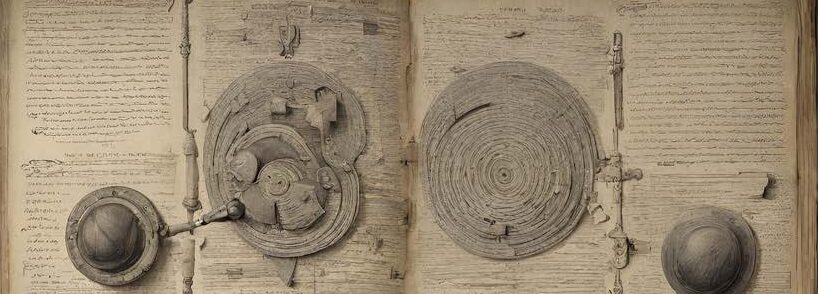Chalkboards have been used in classrooms for centuries, and the big blackboards that are so familiar to most people today have a rich past. The earliest prototypes were single boards that resembled slates, which students used in place of pen and paper since they were less expensive. According to most historical accounts, the first mounted school chalkboard was invented in Scotland in the early 1800s and promptly extended to the United States and other countries (Avenia, 2012; Goerndt, 2021; Krause, 2000; Mithra, 2023). Image: Amazon.ae


Since ancient times, people have utilized chalk, a soft, white, porous sedimentary rock, as a writing instrument. It was initially employed for writing on a variety of surfaces, such as slate and clay tablets, in ancient Mesopotamian and Egyptian civilizations. Slate stone, a fine-grained rock that was simple to write on with chalk, was first used to create chalkboards. Sticks of processed “chalk” are manufactured specifically for use with blackboards in white and other colors (Blackboard, 2022). Image: Adobe
According to the research How Chalk Is Made – Material, Making, Used, Processing, Procedure, Product, Industry (2014), white chalk sticks are mostly composed of calcium carbonate, which is generated from mineral chalk rock or limestone, whereas colored or pastel chalks are composed of calcium sulfate in its dihydrate form, CaSO42H2O, which is derived from gypsum. Using a moist towel, sponge, or specialized blackboard eraser—which is often made of a piece of wood coated in a felt pad—can be used to quickly remove the chalk marks (Blackboard, 2022). The ease of erasure promotes an iterative learning process. Learners can make mistakes, receive feedback, and alter their mistakes fast without the concern of leaving a permanent impression. As a result, the learning environment becomes more dynamic and democratic. Image: iStock


Furthermore, these earliest chalkboards were mostly seen in classrooms, where they quickly became an essential teaching aid. According to Krause (2000), chalkboards are inexpensive, long-lasting, and simple-to-use equipment. They are very dependable, adaptable in their uses, and easy to use (p. 12). One of the best ways to teach and practice writing skills to students is using a chalkboard (Goerndt, 2021). When working through complicated equations and mathematical calculations, chalkboards are a useful tool. They facilitate brainstorming and detailed explanations. Using chalkboards can help you make the most of your student’s learning and memory of new material (Goerndt, 2021). Image: Dreamstime
Chalkboard surfaces work well for temporary displays, schedules, or announcements since they can easily be erased and rewritten. Moreover, chalkboards are used in non-educational contexts to announce events, display menus in cafes and restaurants, communicate information, and send brief but noticeable messages. In addition, chalkboards are used as practical and aesthetically pleasing accessories in homes and workplaces. They are useful for calendars, to-do lists, and reminders (Goerndt, 2021). These uses highlight how adaptable chalk and chalkboards are, showing their continued relevance in a variety of settings from ordinary communication to the arts and education. Image: AliExpress, Home Depot


I have had a lot of personal experience with chalk and chalkboards. Chalkboards invoke nostalgia and remind me of my school days. Back in high school, I used to like studying by scribbling up and writing significant things on slates. I prefer the tactile feeling since it is more relaxing. I am also a visual learner; therefore, I find it simpler to grasp and retain knowledge when it is given graphically. I used to enjoy playing teacher games with friends on slates back in the day. Those were the most remarkable days of my life, which I will never be able to recapture. Image: Amazon.ae
Nonetheless, as technology has advanced, traditional chalkboards have given way to interactive whiteboards and screens. These technologies combine the advantages of physical and digital mediums, enabling more dynamic interactions. As a result, reading and writing habits have evolved in tandem with technological improvements. Image: School Mall

References
Avenia, T. (2012, October 28). The History and Future of the Chalkboard | ETEC540: Text, Technologies – Community Weblog. Blogs.ubc.ca. https://blogs.ubc.ca/etec540sept12/2012/10/28/the-history-and-future-of-the-chalkboard/#:~:text=The%20Invention%20of%20the%20Chalkboard&text=Pillans%20%E2%80%9Csupposedly%20hung%20his%20students
Blackboard. (2022, August 26). Wikipedia. https://en.wikipedia.org/wiki/Blackboard#:~:text=The%20first%20attested%20use%20of
Goerndt ·, K. (2021, July 7). The Benefits of Using a Chalkboard While Teaching. Chalk Ink®. https://www.chalkink.com/blogs/news/the-benefits-of-using-a-chalkboard-while-teaching
How chalk is made – material, making, used, processing, procedure, product, industry. (2014). Madehow.com. http://www.madehow.com/Volume-1/Chalk.html
Krause, S. D. (2000). “Among the Greatest Benefactors of Mankind”: What the Success of Chalkboards Tells Us about the Future of Computers in the Classroom. The Journal of the Midwest Modern Language Association, 33(2), 6. https://doi.org/10.2307/1315198
Mithra, S. (2023, October 4). What is the History of the Chalkboard? (with pictures). WiseGEEK. https://www.wisegeek.com/what-is-the-history-of-the-chalkboard.htm
